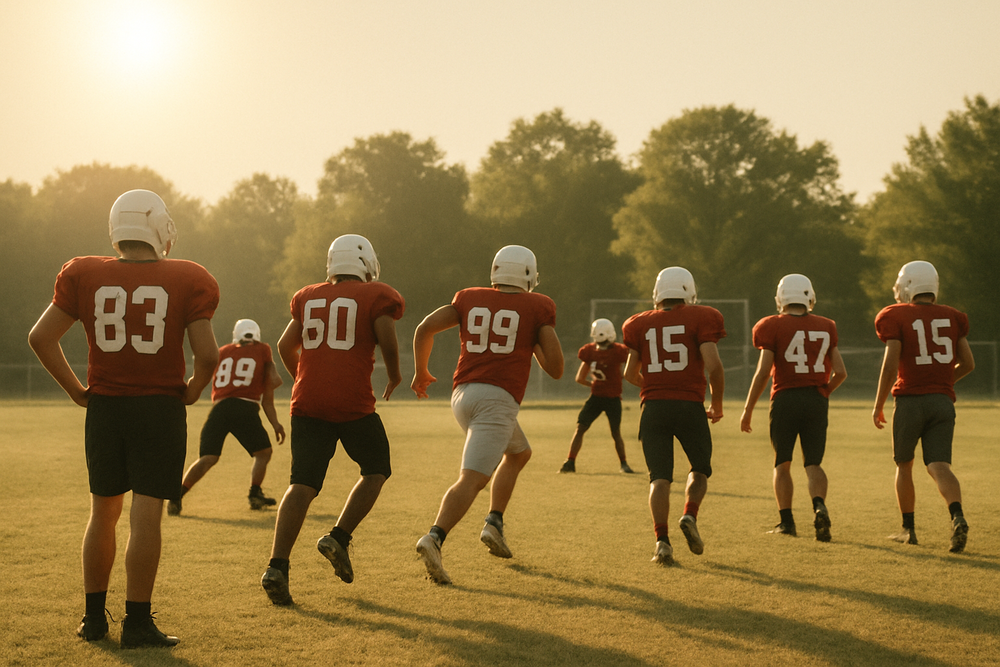Recognizing the Risk
The OSSAA emphasizes that exertional heat-related illness is the leading cause of preventable death among high school students engaged in athletic or activity programs OSSAA Illustrated+1.
Anticipated Approval & Implementation
The new Extreme Heat Policy is currently pending board approval on August 13, 2025, and is expected to be adopted for the 2025–26 academic year OSSAA Illustrated+1.
Key Policy Highlights
Mandatory Training:
All athletic coaches must annually complete "A Guide to Heat Acclimatization and Heat Illness Prevention" through NFHSLearn.com, and marching band directors must complete the Band Safety course. A certificate of completion must be retained on file at each member school OSSAA Illustrated+1.Practice Time Limits:
Preseason sessions are capped at 2.5 hours per session, with a mandatory one-hour rest period before or between sessions.
Daily maximum practice time is limited to 5 hours. Only strength training may fall outside this calculation (i.e. if the coach is present, that counts toward the 5-hour limit) OSSAA Illustrated+1.
If a session is interrupted (e.g., due to weather or heat restrictions) and split, the total time for that session still must not exceed 2.5 hours OSSAA Illustrated.
Acclimatization Requirements:
The policy defines a 14-day acclimatization period at the start of the season or when a student begins practice—whichever is later. All participants must follow these initial-day guidelines. Notably, speed, strength, or conditioning programs do not count toward this acclimatization period OSSAA Illustrated+1.
Historical Context & Additional Guidance
Previously, OSSAA encouraged flexible scheduling, adjusted start times, and frequent breaks during athletic events in response to extreme heat—measures that were widely adopted by schools around August 2023 KOCO.
In 2024, OSSAA also urged use of Wet-Bulb Globe Temperature (WBGT) devices—or phone apps when devices weren’t available—to better assess and prepare for heat risks. Schools were advised to monitor Air Quality Index (AQI) during periods of poor air quality, and to consult guidance from NFHS's Sports Medicine Advisory Committee (SMAC) on hydration, acclimatization, and illness prevention OSSAA IllustratedPerry Weather.
Summary Table
Policy Component | Description |
|---|---|
Board Approval Date | August 13, 2025 (Pending) |
Coach/Director Training | Mandatory NFHSLearn.com courses + annual certification |
Practice Duration | 2.5 hrs/session, 5 hrs/day, with 1‑hr rest rule |
Acclimatization Period | 14 days at season start or participant entry |
Heat Monitoring Tools | WBGT devices or apps; AQI monitoring; NFHS SMAC resources used |
Why It Matters
These rigorous updates reflect a growing commitment to student safety—a trend that builds on earlier efforts to modify event timing and increase hydration and rest during exceptionally hot conditions. The emphasis on education, structured acclimatization, and strict limits reinforces proactive, preventive measures to protect student well-being.

